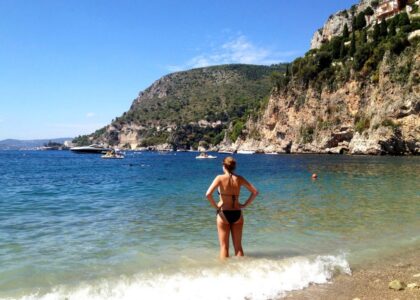Morocco has much to offer to its visitors. It is a land of many contrasts that mix harmoniously to make a land rich in natural beauty and unforgettable places to visit and explore. If your preferences are for culture and history, then the imperial cities tour of Morocco will fit you perfectly. If you are looking for adventure and outdoor activities, then hiking and trekking in the Atlas Mountains will delight you. However, if you’re looking for a sample platter tour of Morocco, then the Grand tour of Morocco is what you’re looking for.
Culture and Heritage
Morocco is a tapestry of multi-ethnic groups offering a rich culture and civilization. The people of Morocco came, in addition to the indigenous Berbers, from the East (Phoenicians, Jews, and Arabs), south (Moors and Sub-Saharan Africans), and North (Romans and Vandals). All of these ethnicities impacted the social structure of Morocco and its beliefs, from paganism, Judaism, and Christianity to Islam.
Politically, Morocco is called an Arab state and sometimes an African state. Seventy percent speak Arabic and about a third speak the Amazigh language. French is the language of business.
Geography and climate
Morocco or the Kingdom of Morocco is located on the North West coast of Africa at the meeting corner of the Atlantic Ocean and the Mediterranean Sea. Morocco’s borders are Algeria to the east and Mauritania to the south. The administrative capital of Morocco is Rabat and its largest city is Casablanca, the economic capital.
Morocco is situated in the northwestern part of Africa. The coastline is approximately 3500 km long. The Atlas Mountain Chain is 2400 km long and stretches from Tunisia to Morocco. It divides the country into the fertile northwestern part and the dry south-eastern part.
In the oceanic northwest, the average temperature is stable at 25 degrees in summer and 16 degrees in winter. With the rising distance to the sea also the temperature rises.
In summer the temperature in the southern part of Morocco reaches up to 50 degrees during the day and 20 degrees at night. In winter the temperatures still rise to 30 degrees during the day and sink at the night partly even under the freezing point.
How to get there
For visits up to three months, U.S. and British citizens do not need visas but must present valid passports in order to enter Morocco. The primary international airport is Mohammed V International Airport (CMN), which is situated around 25 kilometers (15 miles) from Casablanca’s downtown. In addition, there are sixty regional airports, as well as the international airports of Rabat, Tangier, and Marrakech. The national airline of Morocco is Royal Air Maroc.
Delta and Continental provide regularly scheduled flights for passengers in the United States. Many Moroccan destinations are served by Air France, Easy Jet, and Ryanair from the United Kingdom and Europe. Use Regional Air Lines to travel within Morocco on domestic flights.
If you prefer to sail, cruise lines like Norwegian and Royal Caribbean offer itineraries that frequently call at Casablanca and occasionally Agadir.
What to do
If you love adventure, then you can opt for our Morocco trekking tour or Morocco desert tour and enjoy activities like Hiking, Walking, Trekking, Meet Nomads, Berbers, Horse Riding, Camel Riding, Mountain Sports, Camping, and Excursions.
If you are planning a trip to Morocco, then look for a good Morocco travel agency. They can provide you with customized Morocco tours and you can enjoy the local essence of Morocco as they take you through the narrow alleys and bustling souks of Morocco. You can also enjoy the delicacies by tasting lip-smacking cuisines like Couscous, Tagine, and Pastilla and mouth-watering desserts like de Gazelle and Briouates.
Currency and Banking
The national currency is the Moroccan Dirham (Dh, or MAD in online currency converters). The currency is issued in banknotes of 20, 50, 100, and 200 Dirham, coins of 1, 5, and 10 Dirham, and coins of 5, 10, 20, and 50 centimes. (1 dirham is subdivided into 100 centimes).
The Dirham is not available outside of the country. It is normally purchased in Morocco at the bureaux de change in international airports, banks, and at some large hotel lobbies. You could use the Euro, (and to a lesser extent the British Pound and US dollars) on arrival till you make the currency change.
Where to stay
There are a few international hotel chains, like the Sheraton, Ramada, and Hyatt, in larger cities like Casablanca, Rabat, Marrakech, and Tangier. There are also excellent five-star and four hotels throughout all of the major cities. The best lodgings in Morocco, according to many tourists, are riads, which are traditional Moroccan homes that have been transformed into boutique hotels and private guest houses. They are usually nestled deep in old medinas, the beating heart of Moroccan culture and traditions.
If you don’t want to take all the hassle of booking accommodation and other things, then you should contact a genuine Morocco tour company. They will help you arrange luxury accommodations, riads, transportation, and expert guides to make your stay in Morocco a memorable one.
Enjoy your vacation!!






